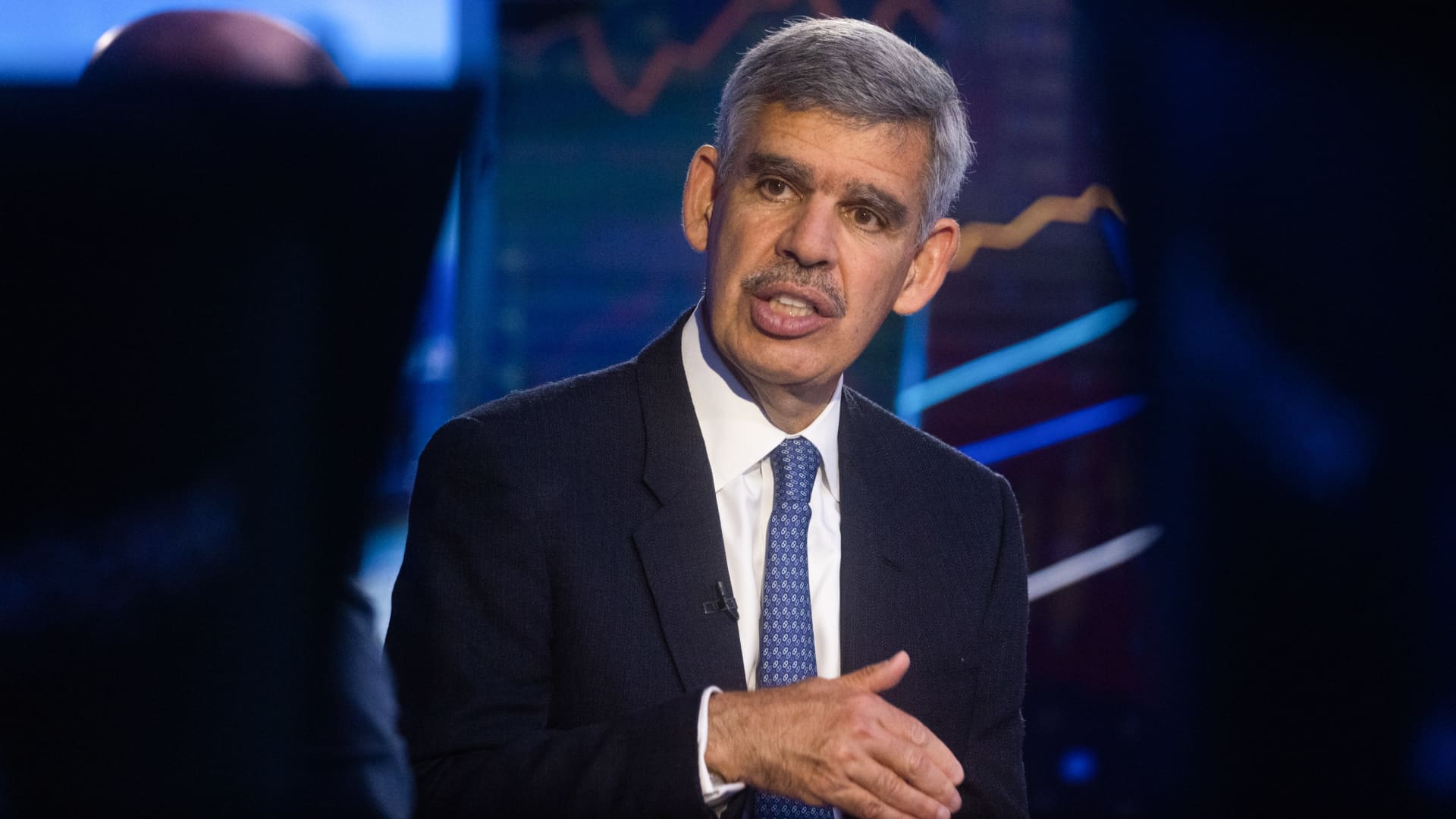The U.S. Federal Reserve has become too data dependent and has lost sight of its overall strategy, Mohamed El-Erian, chief economic advisor at Allianz, said Friday.
The economist told CNBC that a longer-term, more strategic outlook could see policymakers settle on a new inflation target of closer to 3%.
“Rather than be strategic, this Fed is overly data dependent, and has turned into a play-by-play commentator,” El-Erian told CNBC’s Steve Sedgwick at the Ambrosetti Spring Forum in Italy.
“That’s not the role of the Fed,” he continued. “The Fed should be strategic, the Fed should provide a strategic anchor, a stabilizer.”
“The mistake that they may make is they’ll end up this time being too tight,” he said.
The Federal Reserve did not immediately respond to a CNBC request for comment.
El-Erian’s comments follow a recent chorus of Fed policymakers who have begun speaking conservatively about rate cuts.
Fed Chair Jerome Powell said Wednesday that the bank would need further evidence to assess the current state of inflation, casting doubt on expectations for a June interest rate cut.
A day later, Minneapolis Fed President Neel Kashkari said he wondered if the central bank should cut rates at all if inflation remained sticky, causing markets to tumble.
El-Erian said the comments were an example of the Fed “overreacting to data,” and said that it should take a more holistic view of the economy.
However, he noted that policymakers’ hawkish approach could be an indication that they are considering the possibility of a new normal inflation target.
“The way you discuss it politely is you don’t say ‘let’s change the inflation target,’ you say ‘let’s get to 2% somewhere in the future. Let’s have a trajectory,'” El-Erian said. “It may well prove that the economy is stable nearer to 3%. I don’t think that’s going to de-anchor inflation expectations,” he added.
In an effort to drag inflation back down toward its target, the Fed has hiked interest rates 11 times in total over the last few years to a target range of 5.25%-5.5% — the highest level for more than 22 years.
The Fed’s goal has proven especially challenging given the high volumes of U.S. banking reserves at present, according to Richard Koo, chief economist at the Nomura Research Institute.
In past monetary tightening cycles, central banks have squeezed bank reserves as an additional means of lowering inflation. But with current U.S. reserves around 1,700 larger than before the 2008 Lehman crisis, according to Koo, that path was unviable.
“If you tried to tighten with this tool, you have to remove the $3.2 trillion first, before you will have any grip on the situation. And of course, you cannot do that overnight,” Koo said at the same event Thursday.
“So much is on interest rates, and interest rates will have to go much higher to get the same effect it did have before excess reserves were at this magnitude,” he added.
